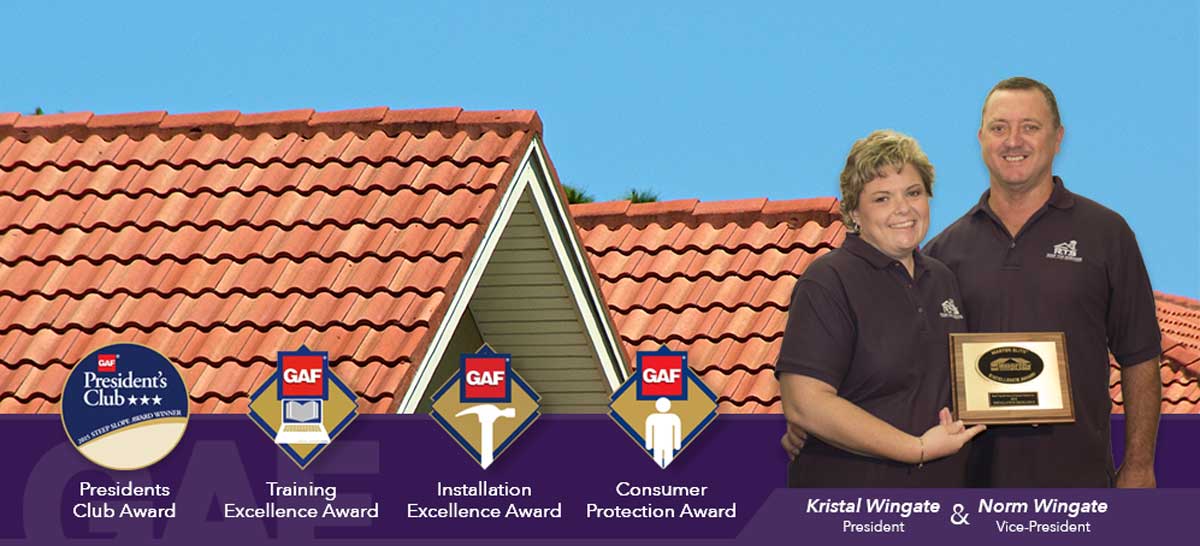Navigating Roofing Trends: What's New in honolulu roofing materials
Navigating Roofing Trends: What's New in honolulu roofing materials
Blog Article
The Ultimate List for Roof Covering Install: Ensuring High Quality and Sturdiness
The process of setting up a roof calls for mindful interest to information. An extensive list can help assure high quality and sturdiness throughout the project. From examining the existing roof covering problem to picking the appropriate materials, each action is vital. Proper preparation and devices play a vital function in accomplishing a successful installation. Nonetheless, several forget the relevance of final evaluations and ongoing upkeep. Comprehending these aspects can considerably influence the durability of a brand-new roofing.
Evaluating Your Current Roofing Condition
Just how can one effectively establish the problem of their present roof? A thorough examination is necessary for examining a roofing's honesty. House owners should start by analyzing the roof covering from the ground, searching for visible indicators of wear such as missing roof shingles, drooping areas, or discoloration. Closer evaluation can be done by accessing the roofing itself, where one should inspect for split or crinkled tiles and check flashing around vents and chimneys.Additionally, the interior of the home warrants attention; water spots or mold development on ceilings and wall surfaces might show leakages. Attic examinations can reveal potential problems, such as poor ventilation or signs of moisture.Regular evaluations, ideally two times a year, can help recognize problems early and prevent costly repairs. By comprehending the roofing's existing state, property owners can make educated choices around essential upkeep or replacements.
Choosing the Right Roofing Materials
When choosing roof covering materials, what factors should property owners consider to guarantee a sturdy and effective option? Initially, the environment plays a significant duty; products ought to endure local weather, whether it's hefty rainfall, snow, or extreme sunlight. Next off, the durability of the material is vital; options like steel or slate offer prolonged lifespans contrasted to asphalt tiles. House owners must likewise evaluate the product's weight, as this can influence the structural integrity of the home. In addition, visual appeals matter; the picked material should enhance the general architectural design. Power effectiveness is an additional consideration; some products reflect warm, decreasing cooling prices. Finally, budget constraints will certainly dictate choices; while some materials might have a reduced upfront cost, long-term toughness can cause higher financial savings. By weighing these aspects, homeowners can make educated choices that boost their roofing's quality and long life.
Getting ready for Installation
Prior to the installment process starts, house owners must ensure that their residential or commercial property is sufficiently prepared to fit the brand-new roofing. This prep work involves several essential steps to assure a smooth and effective setup. Homeowners must get rid of the area around the home of any debris, tools, or furniture that can hinder access for specialists. Furthermore, it is important to educate next-door neighbors about the forthcoming job to reduce interruption and secure cooperation.Next, house owners must check their existing roofing and architectural elements, attending to any type of potential problems such as decomposing wood or leakages that might affect the installment. Additionally, securing necessary permits and sticking to regional building codes is vital for compliance and safety and security. Ultimately, arranging the setup during beneficial weather condition conditions helps prevent hold-ups and assurances that the job earnings without problems. Appropriate prep work sets the structure for a successful roof covering project, inevitably improving the longevity and efficiency of the new roofing.

Crucial Devices and Equipment
In roof covering installation, having the right devices and equipment is crucial for an effective project. This includes important security gear, various roofing installation devices, and efficient product managing devices. Correct preparation and selection of these things can considerably improve effectiveness and security on duty site.
Safety Gear Needs
Safety equipment is a vital component of any roofing setup project, ensuring the wellness of workers at raised elevations. Crucial safety tools consists of difficult hats, which safeguard against dropping debris, and safety goggles to secure the eyes from dust and fragments. Non-slip footwear is substantial for preserving hold on high surface areas, while harnesses and lanyards offer fall defense, preventing severe injuries. Handwear covers help secure hands from sharp products and minimize exhaustion throughout prolonged periods of work. In addition, high-visibility vests boost visibility, advertising recognition among employee and neighboring workers. The use of ear security may additionally be a good idea in noisy settings. Overall, sticking to safety gear requirements is crucial for a risk-free and reliable roofing installment process.

Roofing Installment Tools
Correct precaution lay the groundwork for an effective roof job, yet having the right tools and devices is equally essential. Crucial devices for roof installment consist of a ladder, allowing safe accessibility to the roofing, and a roof nail gun to guarantee efficient and secure fastening of materials. A chalk line is vital for noting straight lines, while an utility knife is needed for cutting roof products accurately. Additionally, a pry bar aids in getting rid of old tiles. Employees need to likewise have a degree to verify correct alignment and drainage. Ultimately, a good set of job handwear covers shields hands while supplying grasp. With each other, these devices assist in a smooth roof procedure, improving both high quality and sturdiness.
Product Handling Tools

A variety of product handling devices is important for an effective roofing installment procedure. Tools such as forklifts, raises, and dollies help with the movement of hefty products like roof shingles and underlayment to the task site and onto the roofing. Using scaffolding and ladders assurances risk-free access to elevated locations while decreasing the risk of injury. Tarpaulins and containers are needed for correct storage space and company of materials, preventing damages and guaranteeing simple retrieval. Furthermore, a crane might be needed for larger roofing projects to lift considerable products straight onto the roof covering. Appropriate training in utilizing this devices is crucial; it enhances operations efficiency and adds to general job safety, assuring a successful roof setup.
Step-by-Step Installation Refine
The detailed installation procedure is important for an effective roof covering installment. It begins with preparing the roofing surface, complied with by the appropriate installation of underlayment, and wraps up with the reliable safeguarding of roof covering products. Each of these steps plays an important function in making certain the resilience and performance of the roofing system.
Prepare the Roofing System Surface
Preparing the roof surface area is essential for ensuring an effective setup of roof materials. This process begins with a comprehensive evaluation to identify any kind of existing damages or debris. Any loosened roof shingles, extending nails, or old roofing materials have to be eliminated to produce a tidy, smooth structure. Next, the roof covering deck should be looked for rot or architectural issues, as these can jeopardize the integrity of the brand-new roof covering. After fixings, a thorough cleansing is required; this consists of sweeping away dirt, leaves, and any kind of various other impurities that might hinder adhesion. Lastly, guaranteeing correct drain and honolulu roofing contractor air flow is crucial, as these factors affect the longevity of the roofing. A well-prepared surface area sets the phase for optimal installment and toughness.
Install Underlayment Effectively
Setting up underlayment properly is fundamental for improving the general efficiency of the roofing system. The process starts with picking the appropriate underlayment material, which can consist of really felt, synthetic, or rubberized choices. Next, verify the roof covering surface is tidy and completely dry prior to laying the underlayment - commercial roofing honolulu. Begin at the lowest point of the roof, rolling out the underlayment flat and overlapping each row by at the very least six inches. It is very important to safeguard the underlayment in location with staples or roofing nails, preventing spaces or wrinkles that can jeopardize water resistance. Finally, trim excess material at the edges, ensuring a neat finish. This thorough setup step is crucial for giving an added layer of protection against dampness and enhancing sturdiness
Secure Roof Products Efficiently
After validating the underlayment is appropriately mounted, the following step involves securing the roofing products properly. Initially, the roof specialist ought to gather all essential products, consisting of roof shingles, nails, and flashing. Starting at the most affordable factor of the roofing system, tiles need to be stocked a staggered pattern, validating appropriate overlap to stop leaks. Each tile must be attached with nails, utilizing the producer's advised spacing and quantity. It is vital to drive nails straight, staying clear of over-penetration, which can compromise the product. Blinking must be installed around smokeshafts and vents to enhance waterproofing. Ultimately, the professional should carry out a complete evaluation to validate all products are firmly secured, as this will greatly affect the roofing system's total toughness and longevity.
Performing Last Evaluations
Complete last examinations are vital to assure that a newly set up roofing fulfills all security and quality criteria. This crucial step includes reviewing the whole roofing system for any prospective problems that may arise post-installation. Assessors need to check out the placement of shingles, ensuring they are correctly protected and complimentary from issues. Blinking and air flow systems should likewise be assessed for right setup and functionality.Additionally, the examiner must examine seamless gutters and downspouts to validate they are appropriately placed to assist in water drainage. Any signs of leakages, misaligned materials, or inadequate securing around penetrations need to be addressed right away. Roofing professionals must likewise see to it that all particles from the installment process is eliminated, leaving the website clean and secure. Performing these comprehensive inspections helps protect against future difficulties, inevitably prolonging the lifespan of the roof covering and supplying property owners with peace of mind regarding their financial investment.
Preserving Your New Roof
Correct maintenance is crucial for assuring the durability and efficiency of a new roofing. Homeowners must conduct routine examinations at least two times a year, preferably in springtime and fall, to recognize potential concerns early. During these examinations, they ought to seek signs of damage, such as missing shingles, leaks, or debris accumulation, which can hinder drainage and promote mold growth.Cleaning rain gutters and downspouts is necessary, as clogged systems can lead to water damage and architectural concerns. Furthermore, cutting looming branches can prevent abrasion and debris accumulation on the roofing system surface.It's likewise suggested to set up expert assessments every few years to evaluate the roof's problem extensively. Keeping records of maintenance tasks and repair work can assist track the roofing's efficiency with time (honolulu roofing materials). By adhering to a consistent maintenance regimen, homeowners can protect their financial investment and assure their brand-new roofing stays effective for years ahead
Often Asked Concerns
How Long Does a Typical Roofing System Installment Take?
The duration of a regular roofing setup varies based upon aspects such as roofing dimension, materials, and weather. Generally, it can take anywhere from eventually to numerous weeks to complete the installation.
Can I Mount a New Roof Covering Over an Existing One?
The inquiry of installing a new roofing system over an existing one frequently arises. Several house owners consider this alternative for cost-effectiveness, but it is important to assess local building codes and the structural stability of the existing roof.
What Allows Are Required for Roofing Installment?
Prior to mounting a roof, one should examine regional regulations. Commonly, building authorizations are required, together with inspections to ensure conformity with safety standards and zoning laws. Consulting with neighborhood authorities is essential for appropriate advice.
What Guarantees Are Available for Roofing Products?
Different warranties exist for roofing products, generally including manufacturer guarantees covering problems and performance. Furthermore, some specialists use workmanship service warranties, guaranteeing installation high quality. Customers should carefully evaluate terms to understand coverage duration and constraints.
Exactly How Can Climate Affect the Installment Process?
Climate substantially impacts the installment process, as rainfall, snow, or severe temperatures can delay job, influence product adhesion, and compromise safety and security. Proper planning and scheduling around weather forecasts are vital for successful roofing setup.
Report this page